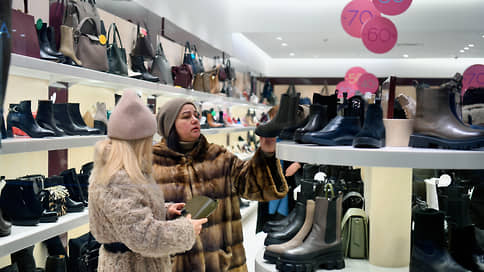Attendance at shopping centers in the week of March 4-10 increased by 5-9% year-on-year
[ad_1]

The gradual adaptation of consumers to the crisis, their growing interest in new brands and entertainment areas contributed to an increase in traffic to shopping centers in the week of March 8 by 5–9% year-on-year. Traffic at large facilities, which have been hit hardest by the current economic instability, increased significantly by 20%. This, as expected, led to an increase in retailers’ turnover.
The Mall Index (reflects the number of visitors per 1 thousand sq. m of retail space) in the week of March 4–10, including holiday weekends, grew by 9% year-on-year in Moscow, by 5% in St. Petersburg, Kommersant reported. at Focus Technologies. The growth compared to the previous week was more pronounced than a year earlier, amounting to 15% and 10%, respectively.
Mikhail Vasiliev, head of research and consulting at Focus Technologies, associates the positive trend with the active return of buyers to large-format shopping centers with an area of more than 80 thousand square meters. m. Last week, their attendance in Moscow increased by 20% year-on-year, while for small formats the dynamics were only 12%. Olga Lesina, director of the property management department at Nikoliers, believes that in properties with high occupancy, attendance increased by 20–25% over the year.
Previously, it was large-format shopping centers that faced a more pronounced drop in traffic: foreign brands that left the market traditionally occupied a significant share of space in them (see “Kommersant” dated December 14, 2022). Mikhail Vasiliev associates the increase in traffic in such facilities with the opening of new stores and the gradual restoration of purchasing power. Regional director of the retail real estate department of NF Group, Evgenia Khakberdieva, talks about strengthening customer loyalty to new brands. Seeing more variety in shopping centers, “shoppers feel consumer excitement, this is manifested in an increase in the number of impulsive purchases,” says Alexey Vanchugov, managing partner of Vanchugov and Partners.
According to Vyacheslav Katsegorov, director for strategic development of the Magazin Magazin company, jewelry chains and restaurateurs are doing better, while household appliances and clothing stores are doing a little worse. Stockmann CEO Gennady Levkin says that traffic in comparable department stores in his chain increased by 30% year on year. But the expert still considers the trend to be ambiguous, noting that the dynamics could have been affected by the presence of a long weekend on March 8 this year. Leonardo’s saw no year-over-year increase in traffic last week. District shopping centers always have more stable traffic than large shopping centers, the company is convinced.
At the same time, Mr. Vasiliev draws attention to the fact that such facilities often have entertainment areas that consumers actively visit during the holidays. Hello Park Development Director in Russia and the CIS Ekaterina Bolshakova says that the attendance of its facilities in various shopping centers this year is 20-30% higher than last year, this is the most pronounced dynamics since 2016. Mr. Katsegorov notes that children’s centers and food halls also show good indicators, and a slight increase in attendance is also noticeable in cinemas.
The current growth of interest in large-format objects allows us to build a positive market forecast. Mr. Vasiliev assumes that if the trend continues, by the end of spring, attendance at shopping centers in Moscow and St. Petersburg will increase by 2–4% year on year. Ms. Khakberdieva believes that the positive trend in the retail real estate market confirms the growing interest of retailers in expanding their presence both in Moscow and St. Petersburg, and in regional centers. The economy of shopping centers as a whole is improving, says Alexey Vanchugov. He explains that the mere filling of vacant space by anchor tenants and their stable sales contribute to the intensification of plans for the development of secondary brands that occupy relatively small areas but generate the main rental income.
[ad_2]
Source link





